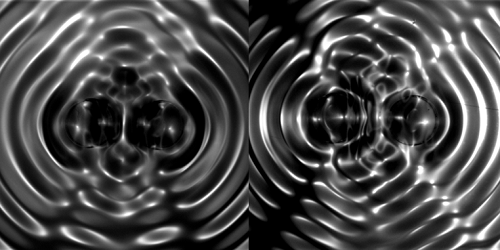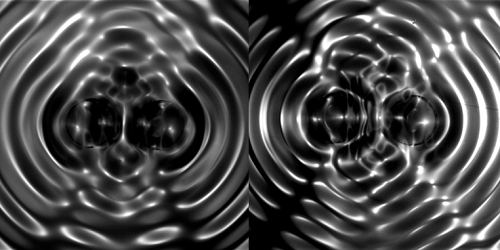A Hydrodynamic Version of Superradiance
Fluid materials provide laboratory-scale systems to study objects ranging from atoms to black holes. Experiments on these fluids offer valuable insights into processes that can be difficult to probe directly. Now John Bush and his colleagues at the Massachusetts Institute of Technology show that such an analog can display a behavior reminiscent of superradiance—a collective light-emission phenomenon that is of both fundamental and practical interest [1]. The researchers say that their findings could inspire new physical pictures of superradiance and related effects.
Superradiance occurs when the emission rate of photons from a collection of atoms is boosted by interatomic interactions. When the distance between the atoms is close to the wavelength of the emitted light, the emission rate oscillates as a function of the separation distance. This phenomenon has applications in various fields, including cryptography and quantum information.
Bush and his colleagues achieved superradiance-like behavior in a vertically vibrated liquid bath that contained two circular wells. An increase in the vibrational force caused the initially flat liquid surface to destabilize into a pattern of waves. A further increase in the force resulted in a breakup of these waves and an emission of droplets from the two wells. The team found that the emission rate was higher than that for two isolated wells and oscillated as the distance between the wells was varied. This hydrodynamic effect therefore captures the key features of superradiance in optical systems. The researchers say that their setup could provide a platform to explore hydrodynamic versions of other particle-emission phenomena.
–Ryan Wilkinson
Ryan Wilkinson is a Corresponding Editor for Physics Magazine based in Durham, UK.
References
- V. Frumkin et al., “Superradiant droplet emission from parametrically excited cavities,” Phys. Rev. Lett. 130, 064002 (2023).





